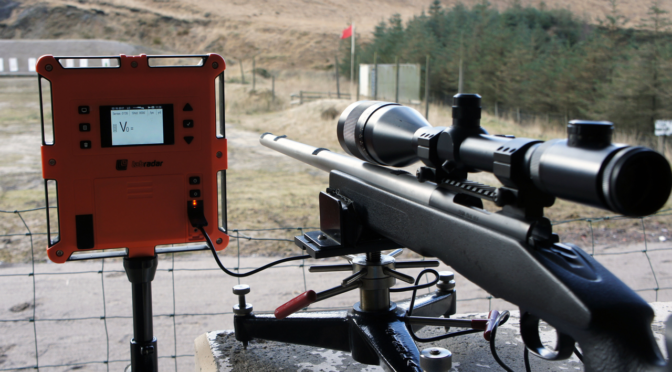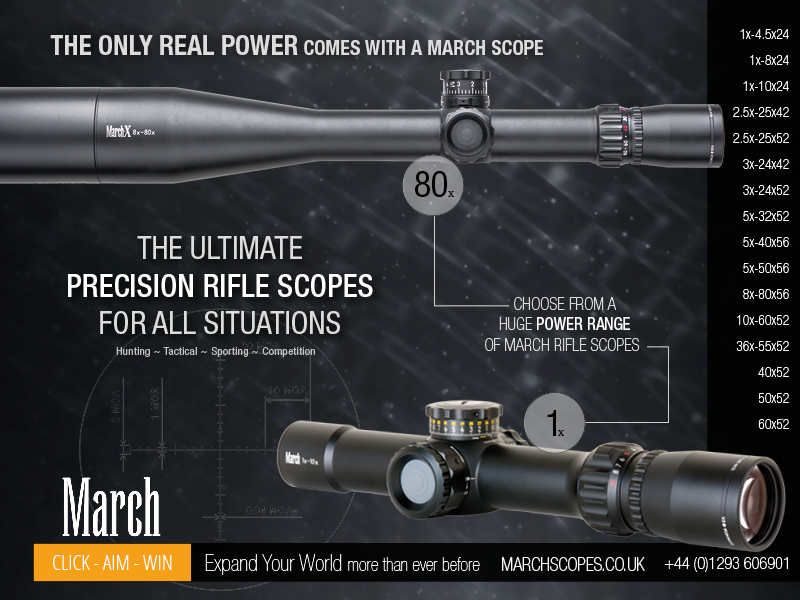The Labradar: At Last a (nearly) Perfect Chronograph
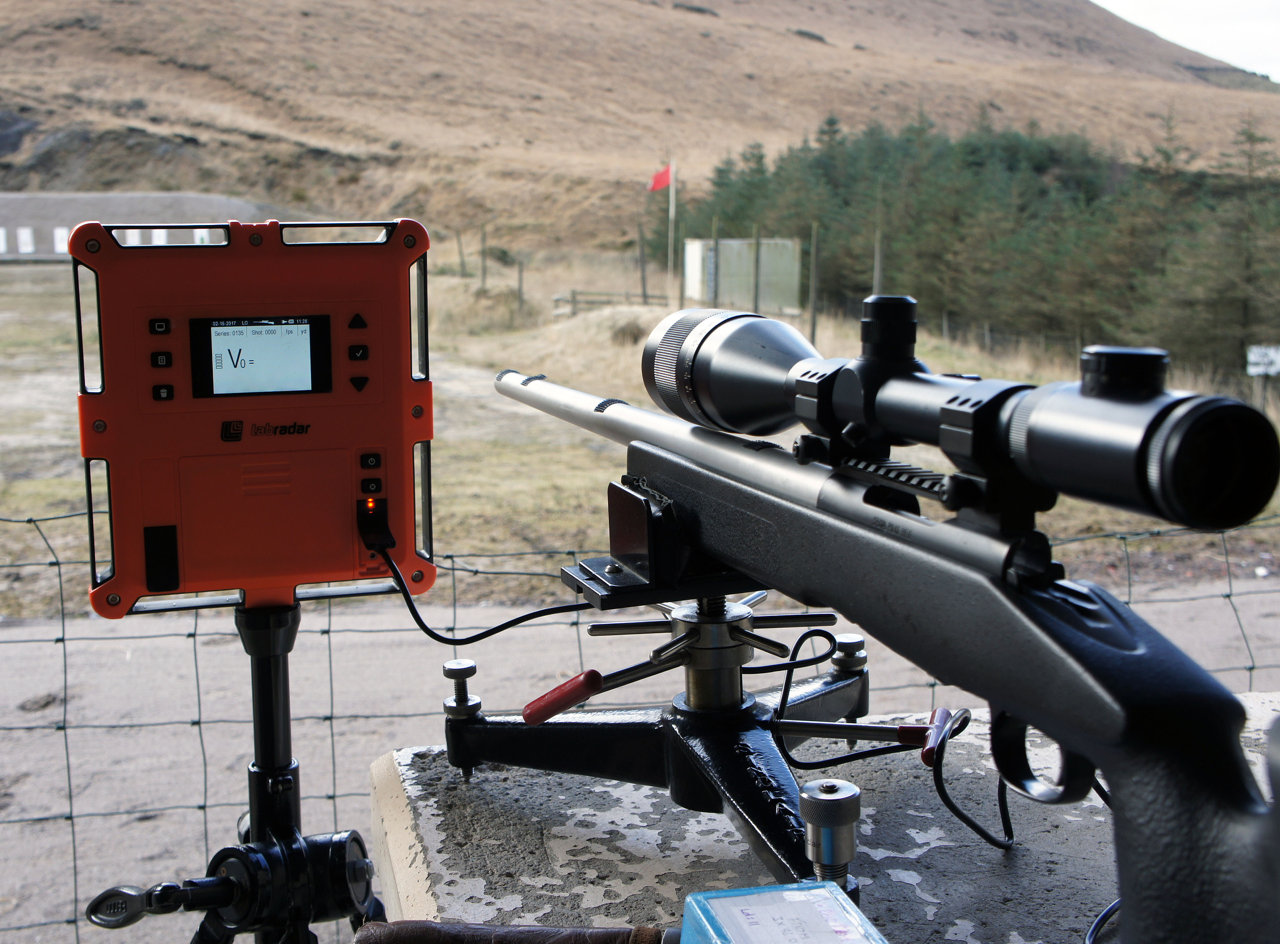
The Labradar set up for use on a bench-equipped range. It is ready to go with a new series selected and has been ‘armed’ (amber LED)
I forget how many chronographs I’ve used over the years but do know that until the MagnetoSpeed arrived, I never found any of them 100% satisfactory. Of a series of optical models, some worked on bright days only; some on dull ones; most displayed obvious inaccuracies on at least one occasion – the problem then being how did I know when they were lying or telling the truth?
At one stage, I’d take a 22LR match rifle to the range and fire a couple of Eley standard velocity rounds over the chronograph to verify it was reading properly before starting on centrefire rounds. The final straw was a range session where a black cloud slowly moved overhead and, as light levels fell, I watched recorded MVs drop on each successive shot – eventually ‘losing’ 150 fps by the end of the string!
Any residual faith I had in the genre’s reliability faded alongside those missing values. The errant chronograph has a good reputation and had been purchased at not inconsiderable cost, so this was no cheapskate model. However, it is important not to tar all optical chronographs with this particular brush – the discontinued Oehler 35P is renowned for its accuracy and reliability but suffers from an unwieldy triple sky-screen array that makes range set-up a chore as well as being vulnerable to blowing over in the wind.
That of course raises another issue. Optical chronographs are a pain to set up ahead of the firing line, disruptive to other range-users too. The arrival of the MagnetoSpeed changed all that and it was impressive how quickly this barrel-mounted system replaced optical models, to the point where they are almost rarities on my home range.
However, the MS has drawbacks – primarily that strapping a few ounces of ‘bayo’ onto the barrel changes its harmonics, affecting the point of impact and, usually but not invariably, group size and pattern. For load development, I ended up loading batches of four to six rounds for each charge weight, one or two of each fired in a single series at one aiming mark with the ‘bayo’ on, then (if satisfied with velocities and absence of over-pressure indications), the remainder as threes or fours for group with the device removed.
Whilst that covered initial load development, it didn’t provide extreme spread and standard deviation values for a string requiring a later session for any load chosen for competition. Interestingly, some of the ‘pressure/velocity-test’ rounds would shoot into remarkably small groups despite a two or even three grain charge-weight range, thanks to the ‘bayo’ apparently smoothing out harmonic effects. It overcame my longstanding doubts about barrel tuners on the basis of their being yet another variable to trip you up. Stuart Anselm at Osprey Rifles is currently rebarrelling one of my smokepoles with his design of tuner fitted – something I’ll report on in TS in due course.
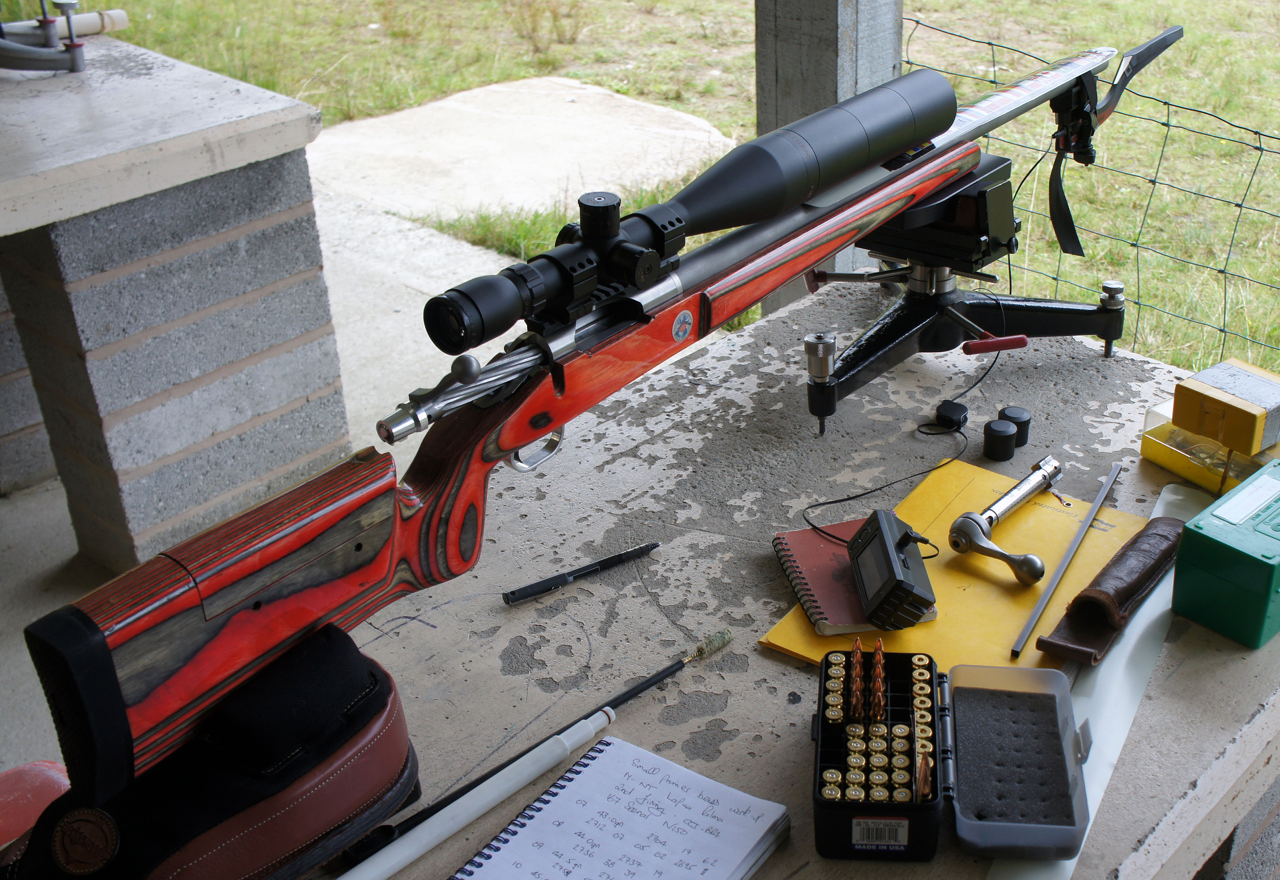
MagnetoSpeed V3 during primer performance tests – an excellent reliable tool, but ………
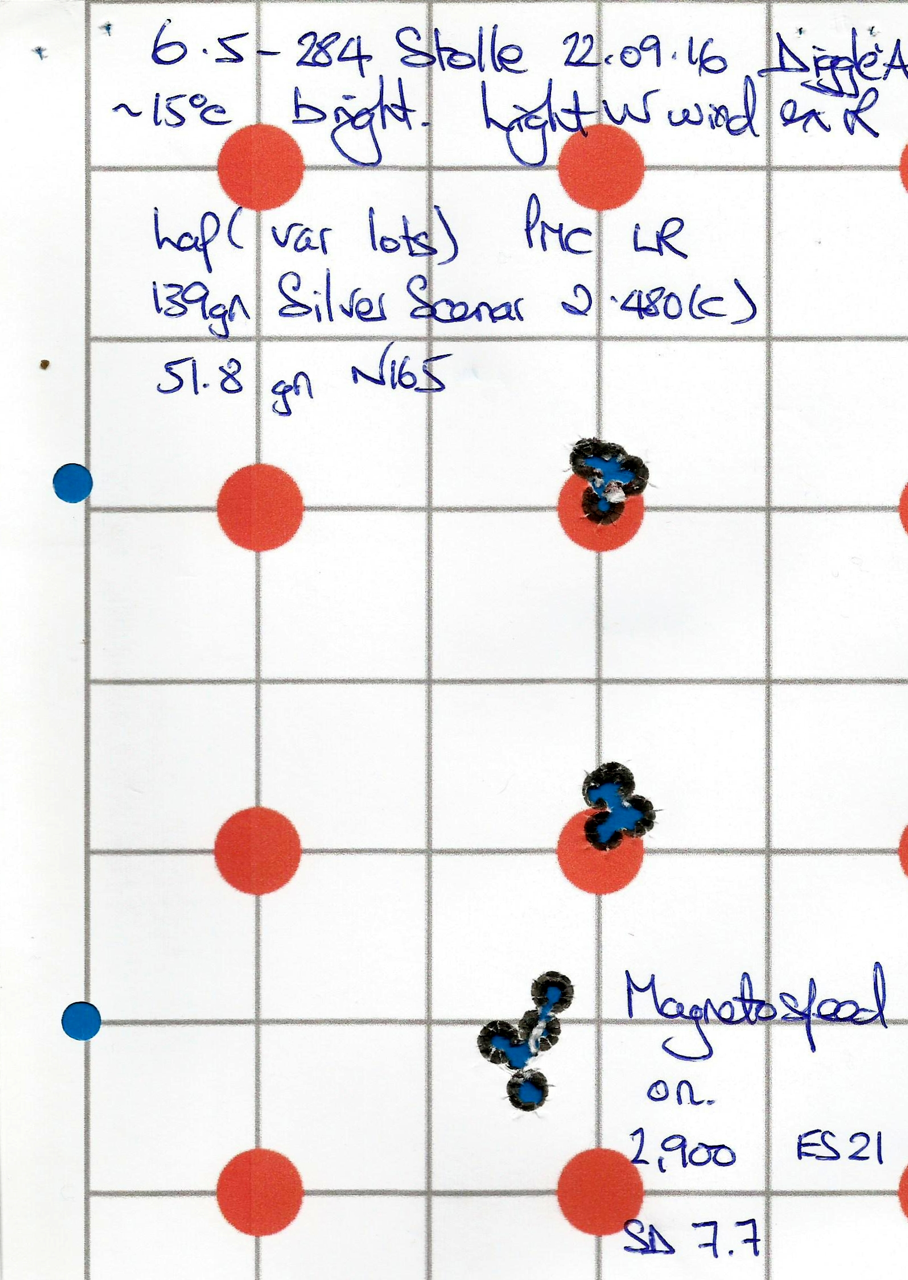
… it does affect POI and group dispersion. The top two groups are without the MS bayo’ fitted; the bottom one with it on has moved half-MOA left and three-quarters high as well as doubling group size.
Radar
I’m still a fan of the MagnetoSpeed, especially the high specification and flexible V3 and reckon it’s a great device for those wanting to do a post load-development velocity check, or ensuring that a new powder lot, primer substitution, or barrel wear and tear hasn’t changed things. However, when the Labradar appeared, I knew I had to have one, given the amount of load development and testing I do.
It gives us everything, or nearly so: a freestanding system that stays on the firing line adjacent to the firearm; is uninfluenced by ambient conditions (can be used in rain or snow if need be); a consumer version of high-end technology used by multinational armaments companies and military testing outfits. It is made by the Canadian company Infinition Inc. that is a market leader in providing such powerful, sophisticated professional systems.
As the name suggests, it is your own personal radar set, flinging out a microwave radiation beam and bouncing it off the projectile in flight. Years ago when any kind of chronograph was rare, a fellow shooter asked if my optical device ‘used radar’ mistaking the guide/diffuser rods sticking out of the top for aerials. As I put him right, I secretly wished it did, given the trouble I was having with the infernal machine but could never have envisaged then that an affordable radar chronograph would become available in my lifetime.
Let’s just repeat this point – the Labradar operates in any normal environmental conditions indoors and outdoors, even complete darkness. (As does the MagnetoSpeed.) The Labradar does something else that is unique for ‘hobby chronographs’– it tracks bullets downrange. The North American version does so to 100 yards plus in ideal conditions; our EU-mandated lower power model to 55 yards in my experience with 7mm/.30 calibre bullets. This feature is affected by the bullet size, little 22 projectiles tracked to maybe half the distance of a .35”/9mm. This facility allows a rough and ready check to be made on the bullet’s BC if needed. (I did this for Sierra’s new 160gn 7mm TMK and the calculated 0.300 G7 BC value has proven to be in the right ballpark for scope settings).
Compact
The operating unit is of modest size, only a shade over 11-inches high (285mm), just under 10-inches (250mm) wide and a slim two inches (51mm) deep. However, support of some sort is needed which can be an extra-cost stand, or in my case a trusty, stable photographic tripod that did sterling duty holding up optical chronograph sky-screens and has now been returned to use. Less batteries and stand, our radar set weighs in at a heavier than it looks 3lb 10oz (1.64Kg) suggesting that the sturdy looking plastic case is just that – thick and strong, so the Labradar should survive occasional mishaps. (Its halves are fastened by no fewer than seven sturdy socket head bolts).
Quite puzzling to an electronics illiterate like myself is the absence of grilles, aerials, or any aperture at all in the rear casing – when I say ‘rear’ that is really the ‘front’ in operational terms, it being the side that looks downrange and fires radar pulses at the bullet. So how does the radio beam get out … and equally strange, how do the much weaker ‘returns’ get back in?
Mentioning batteries, there is provision for six AA types in a compartment in the front of the case, but the Labradar has a reputation for eating cells quickly, so unless usage will be short or you really feel duty bound to support Duracell’s shareholders, an external power supply is a good idea. This can be stepped down mains power where available, or more practically a USB compatible power-pack as used by travellers to recharge smart phones.
Set-Up
Most shooters seem to get the device to work without any issues but, a minority apparently struggle to get it triggered and start pinging the bullet. The most likely reason is poor placement in relation to the muzzle and/or a mismatch in one of the chronograph’s settings – for example it being set for Doppler radar operation which should only be used for very large and slow projectiles, not firearms. The Labradar should be positioned behind the muzzle and ideally one to six inches to either side of the barrel, although it will work at up to 18-inches. The closer it is to the barrel/bullet track, the more precise the results as well as providing more reliable shot-triggering.
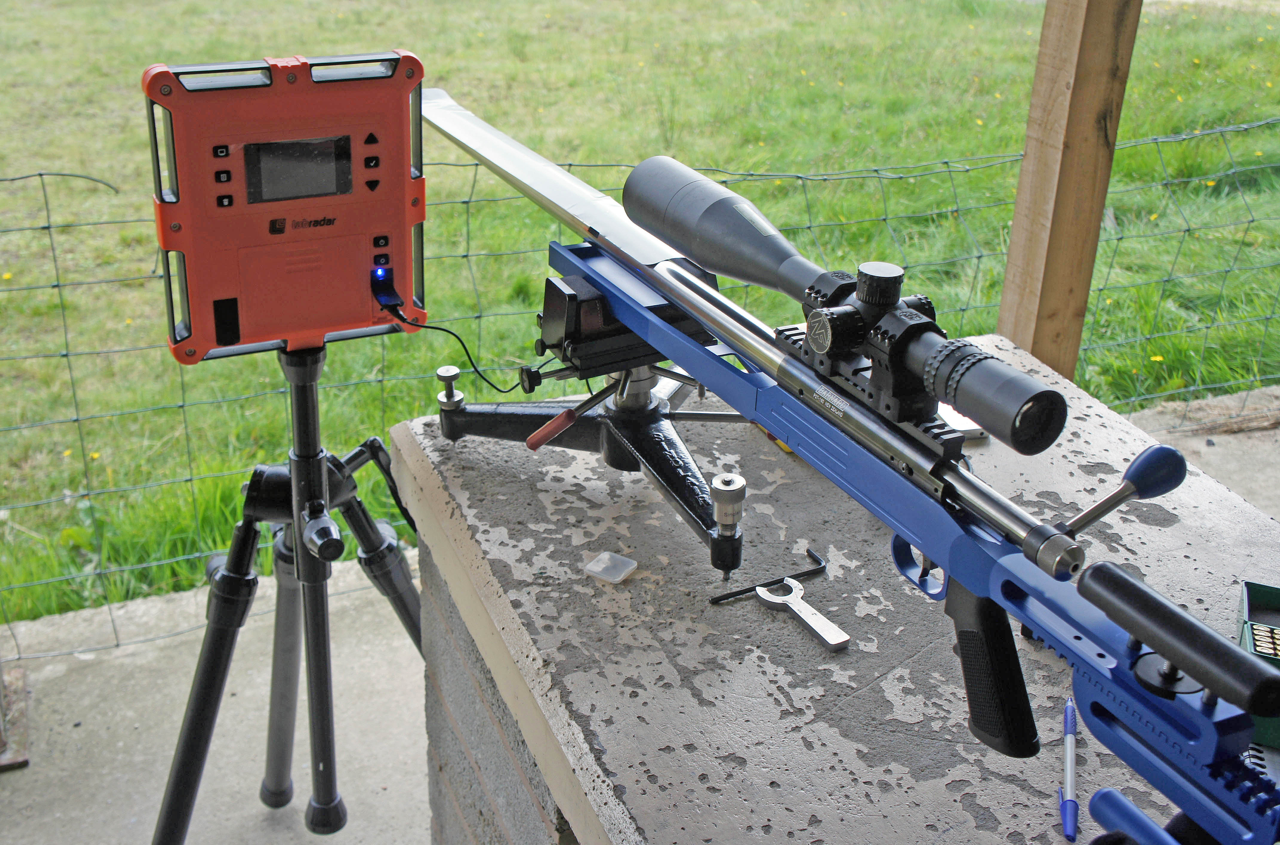
Labradar set up and in power-saving standby mode with a blank screen. (Blue LED = disarmed.) I now position the device closer to the barrel than seen here for improved tracking and reliable shot-triggering.
The device should be ‘aimed’ at the target, there being a notch in the top of the casing to align it. Most users, me included, find this feature pretty useless. In my case, using it for a bench-rested rifle, I simply set the rifle up on the rest / rear bag aimed at the target, put the Labradar on the tripod to one side of the barrel a few inches behind the muzzle, check it is vertical and positioned so that the barrel’s position is around half way up the Labradar body. Finally, I adjust the ‘aim’ by looking down on the pair from above and turning the Labradar so that it is sitting at 90-degrees to the barrel.
The reason for placing the mid-point of the casing level with the barrel is partly device/bullet alignment but also because there are two internal microphones, one on each side and situated there. The shot’s muzzle blast/acoustic signature trigger the chronograph through the nearer mike saying ‘a shot has been fired – look for the bullet’. Those using the Labradar when shooting prone off the elbows, or with a pistol, will need to align the device on the target first then position oneself and firearm alongside it.
Buttons and Settings
Considering simple optical chronographs only have an on/off switch, the Labradar with eight function buttons, a variable-colour LED indicator and three data/power input/output points hiding under protective neoprene flaps looks pretty complicated. A 22 page instruction booklet including schematics for the Review/Delete functions and an operating/settings menu list with 17 separate items to be checked or input look pretty daunting too but, it’s not a difficult device to set up and use. It does help to read the manual before using the Labradar of course – always surprising how many people don’t!
Display and controls
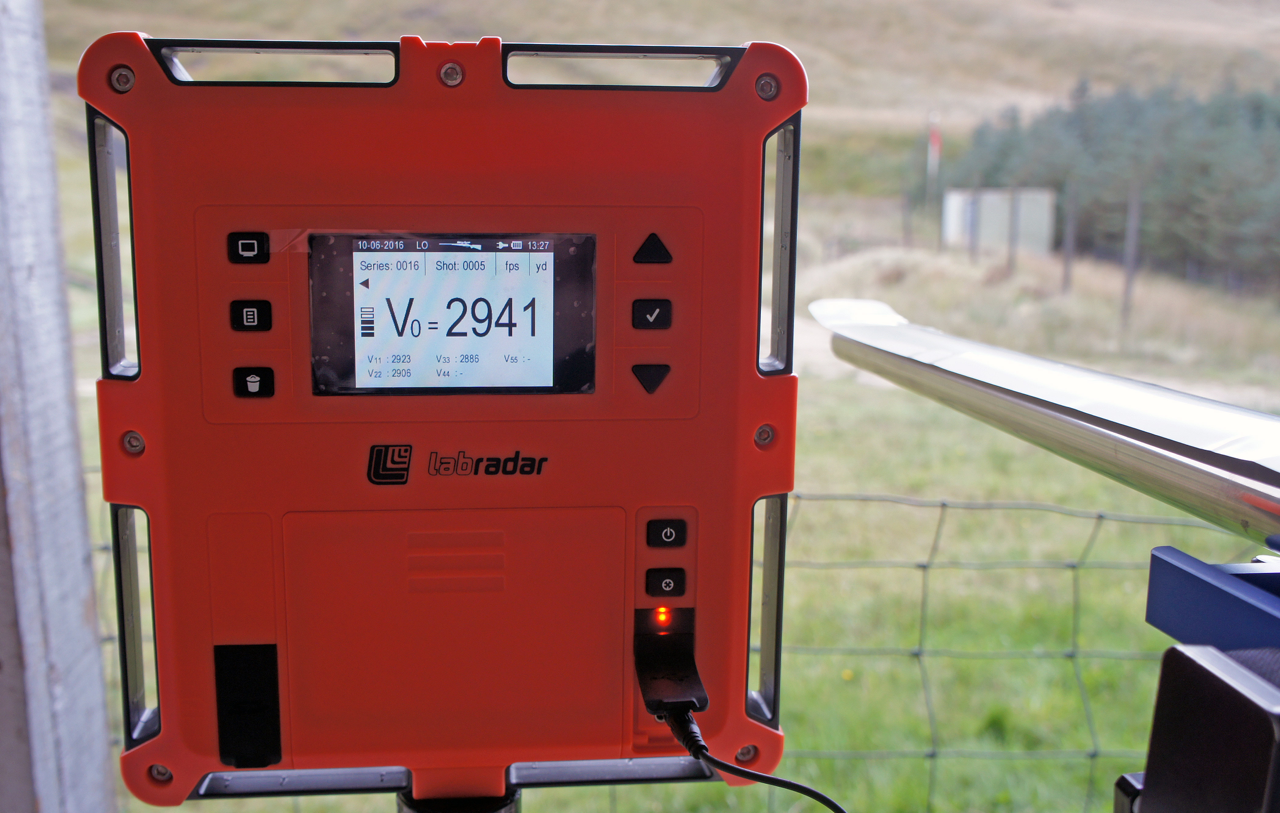
Alignment could be better (three signal strength bars out of five and the 7mm bullet tracked to 44 yards, 55 being possible).
The set-up menu is basic stuff anyway and mostly only done once – for example inputting system time and date; metric or imperial units (fps v m/s and suchlike); projectile type/speed (handgun v rifle v arrow) and inactivity duration before the unit is ‘disarmed’ or the screen blanks to save batteries. There are some variables – such as the option of inputting the bullet-weight (to calculate energy both at the muzzle and downrange); distance from muzzle and trigger sensitivity levels – that might be sometimes changed to suit different on-range setups. Should you find another Labradar user on the next lane, you’re advised to change the transmission frequency so that the machines operate at least two channels apart.
I won’t go into a tedious description of the device’s controls and functions, just basic operation. First though, what lives under the flaps? Lift that on the bottom left and you find a slot to accept an SD card (not supplied) to store string and shot records. The right-hand one covers a couple of electrical sockets, one for a small jack to accept an optional extra remote external trigger; the other the small half of a standard USB lead that can be used in either ‘direction’ – power input from a transformer or power pack; in the other direction data output to a smart phone, tablet or other device.
Amber for ‘Go’
Just above the right-hand flap and its sockets, we have two buttons, the top one showing the universal ‘power on/off’ icon, the one underneath decorated with a circle and four inward projecting lines as in a scope reticle but which aren’t long enough to meet in the centre. Between them and the input/output sockets, there is an LED indicator. Press the top button to switch on, it lights up in a blue colour and after a couple of seconds delay for the internals to boot up, the screen comes alive showing a summary of the last recorded shot-series as well as some system and settings information, also battery strength.
Arming and using the Labradar as is will add new shots to that series, so an immediate decision is needed on whether a new one is to be started (which automatically archives the existing one on the SD card), or some or all of the shots in it are to be deleted, these functions using the buttons around the screen. (Starting a new series or deleting the shots in the old one are pretty well must-do actions if a new calibre or load is being tested, the Labradar calculating average MV, ES and SD values on the series).
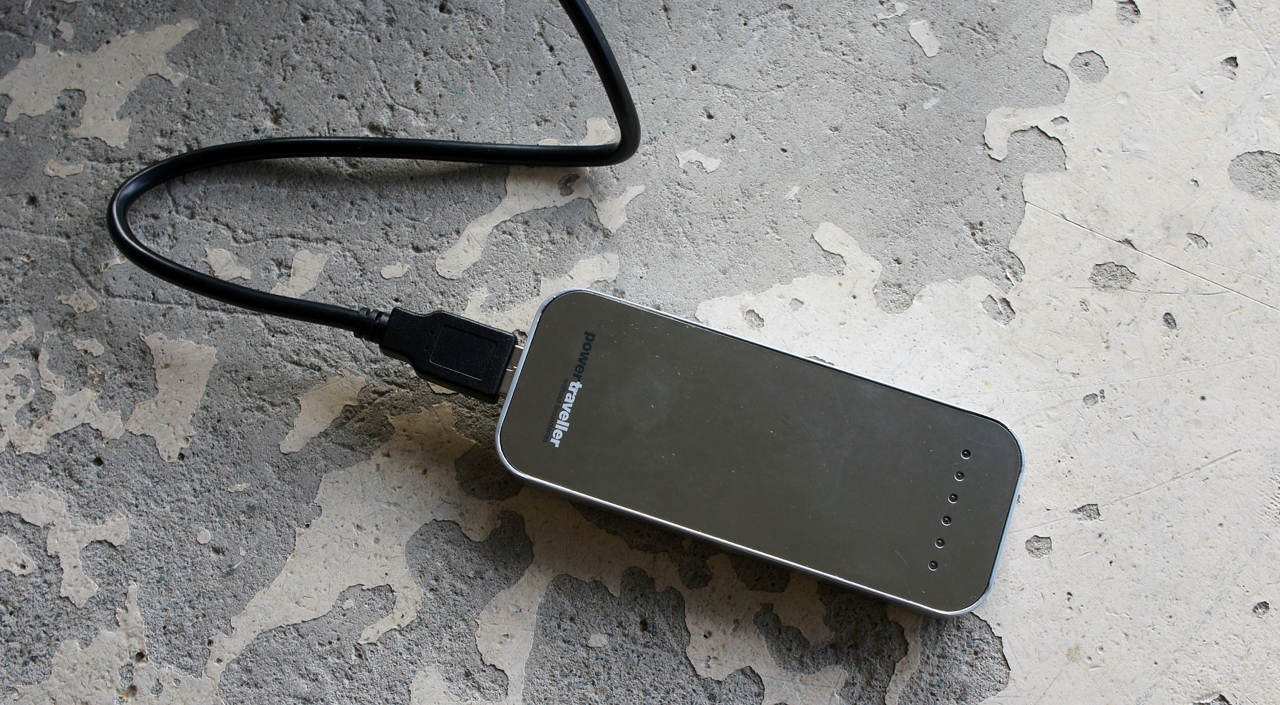
A rechargeable USB phone battery power pack is a near essential accessory for extended sessions.
Returning to the two controls on the lower right of the casing next to the LED indicator, the lower button with the incomplete reticle icon ‘arms’ the device, that is starts radar emissions, also readies it for the shot-report trigger. Press once and the LED remains blue but the screen display changes from a series summary to that for a shot report displaying ‘V0 =’, no value shown. A vertical block of five bars appears on the left of the screen – they show radar signal strength and provide a visual check on how well the radar beam and bullet tracks are aligned – empty at this stage. Press ‘arm’ a second time and the display is unchanged but the LED turns amber showing we’re ready to go. Take the shot and if all is well, readings appear after a few seconds delay – last shot MV; downrange readings; alignment check; and series and shot numbers. That double-push and check for the amber light are crucial – in around 1,000 shots past the Labradar, I’ve lost the very occasional one through alignment/non-triggering issues, rather more through operator error in not ensuring the chronograph is armed.
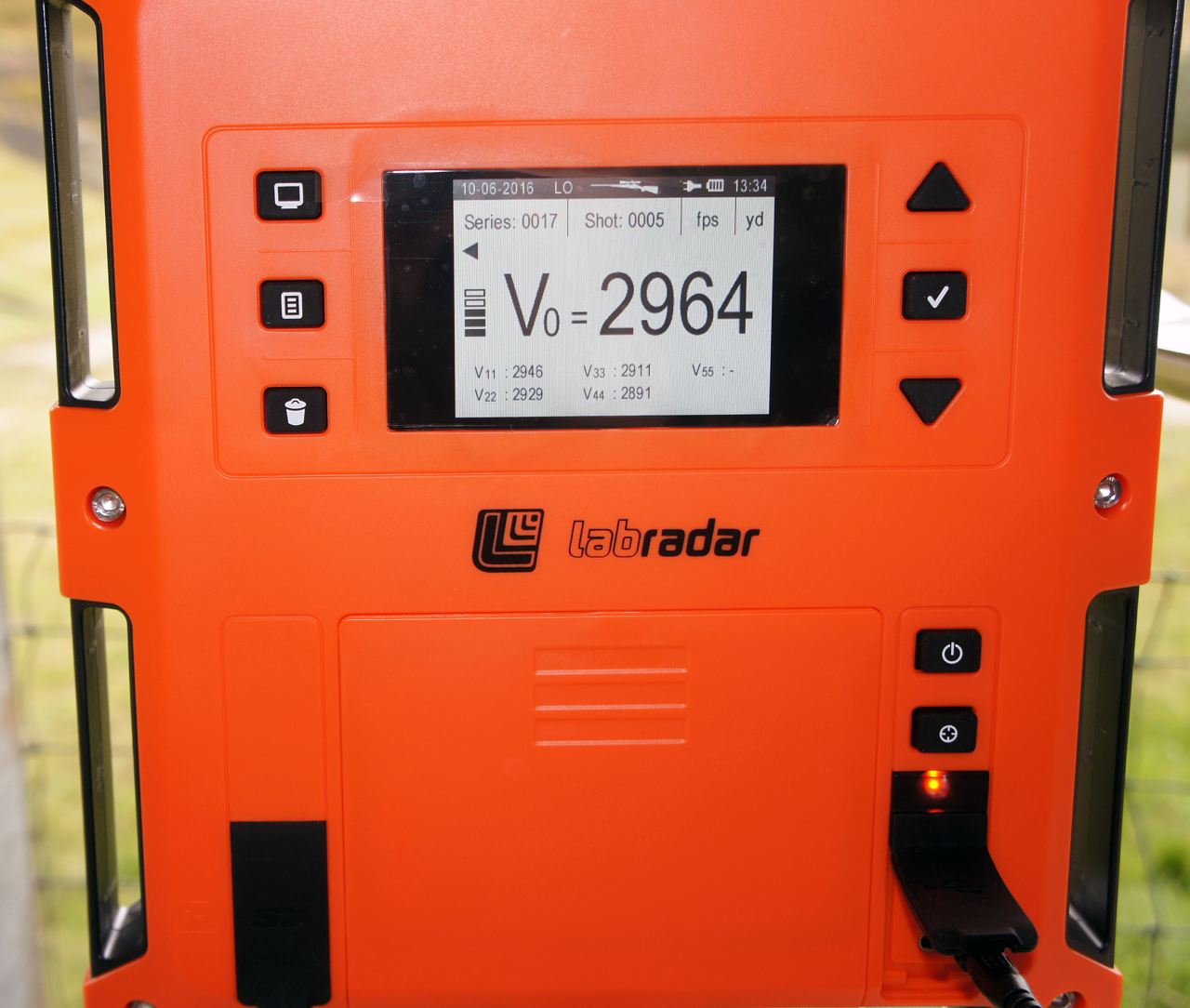
The Labradar is ‘armed’ (amber LED) and shows the last shot was number 5 in Series 16. Information is restricted to the last shot when in this mode.
Performance and Price
Unlike the MagnetoSpeed V3 which somehow crams the last shot MV, its two predecessors, highest and lowest velocities in the series to date and either ES or SD onto its tiny display screen, Labradar’s display relates to the last shot only when in shooting mode. In order to view series information, it is necessary to go into ‘Review mode’, simply done by holding the ‘arm’ button down for a few seconds – the Labradar is then ‘disarmed’ (blue LED shows) and series information displayed. To resume shooting, the press ‘arm’ twice routine is utilised.
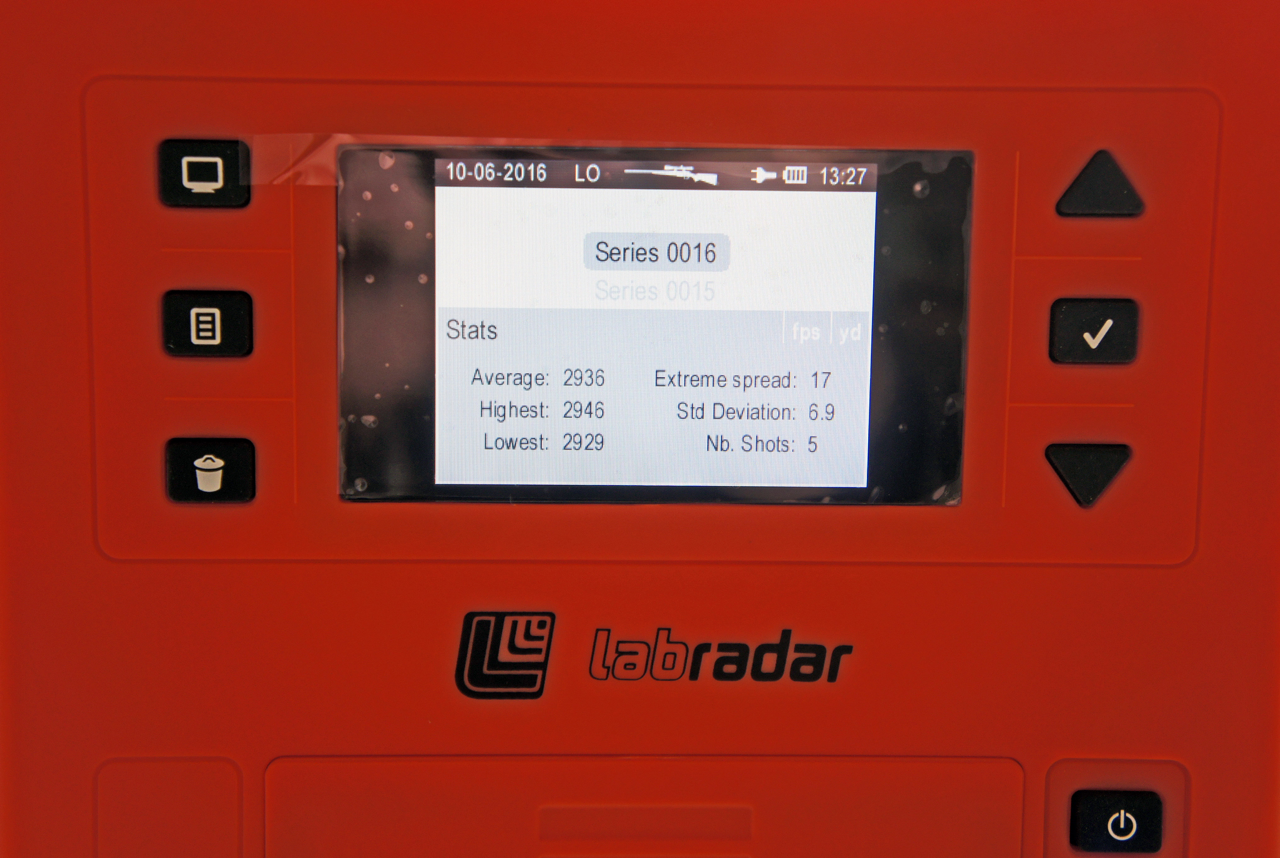
The Labradar has been disarmed and the Series #16 summary is displayed in review mode. This can be entered and individual shots seen and/or deleted if needed. The ‘filing cabinet’ button (mid left) creates a new series, archiving the existing one.
I mentioned that the Labradar tracks bullets downrange recording speeds at (user) set points. Velocities at the muzzle also arrive by this route, the machine taking downrange readings and adjusting speed back to what it would be at the muzzle, necessary because the radar beam and bullet don’t intersect immediately ahead of the rifle/chronograph. Detractors point out that the MagnetoSpeed measures speeds just an inch or two ahead of the muzzle, so ‘must be more accurate’. Independent tests show that the Labradar is very accurate indeed when run alongside professional or specially calibrated chronographs. The Firearm Blog has a side by side test comparing Labradar results with those from a professional Weibel Doppler radar set and the 338LM test round measurements ranged from an identical reading to a maximum difference of 4 fps on speeds averaging 2,940 fps. Average variance between the two machines for a 10-shot string was a mere 2.1 fps or 0.07% of the average MV.
www.thefirearmblog.com/blog/2017/06/30/labradar-vs-professional-weibel-doppler-radar-benchmark-test/
I’ve called this report ‘the (nearly) perfect chronograph’, so what’s wrong with it? Given its technical sophistication, many potential buyers complain about the absence of remote controls making it necessary to lean or step forward to press buttons, moreover many users want a download facility to their smart phones to interface with ballistic apps. Infinition says that the device already has Bluetooth interface capability and the necessary software for communication/control with/from a smartphone is built in but awaits the production of suitable phone ‘apps’. (I’m a notebook and pen using dinosaur, don’t own a smart phone either, so the opportunities on offer here are rather over my head).
My one minor gripe about on-range performance is false trigger events from noisy neighbours’ firearms in covered firing point use – that increasingly rare beast, the short-barrel un-moderated sporting rifle in 243 Win or suchlike, but much worse are ‘tactical’ range pieces, usually 308s, with massive, noisy muzzle brakes. One can play around in the Labradar settings reducing sound-trigger sensitivity, or what I increasingly do, keep an eagle eye on arrivals on the firing point and if one starts to set up a brake equipped piece on the next bench (I seem to attract them like jam does wasps) politely ask the individual to move to a more remote bench explaining why. If somebody else’s rifle does trigger the Labradar, it displays an error message saying it couldn’t find the bullet – simply leaning forward and pressing the OK (•) button clears it and allows resumption of shooting/measuring. Mentioning muzzle brakes, the Labradar has to be kept clear of the exiting gasses, so a low or high mounting above/below the barrel may have to be employed keeping it clear of the brake slots.
Finally, there is the issue of price, the norm in this country being £599. Throw in optional extras such as a padded carrying case, bench stand and suchlike and you can add another ‘C’. Wait a few years for demand to reduce and competitors appear then prices will no doubt fall but radar takes the technology costs into a higher bracket than simple optical devices. The machines are imported by March Scopes UK, and Fox Firearms UK.

